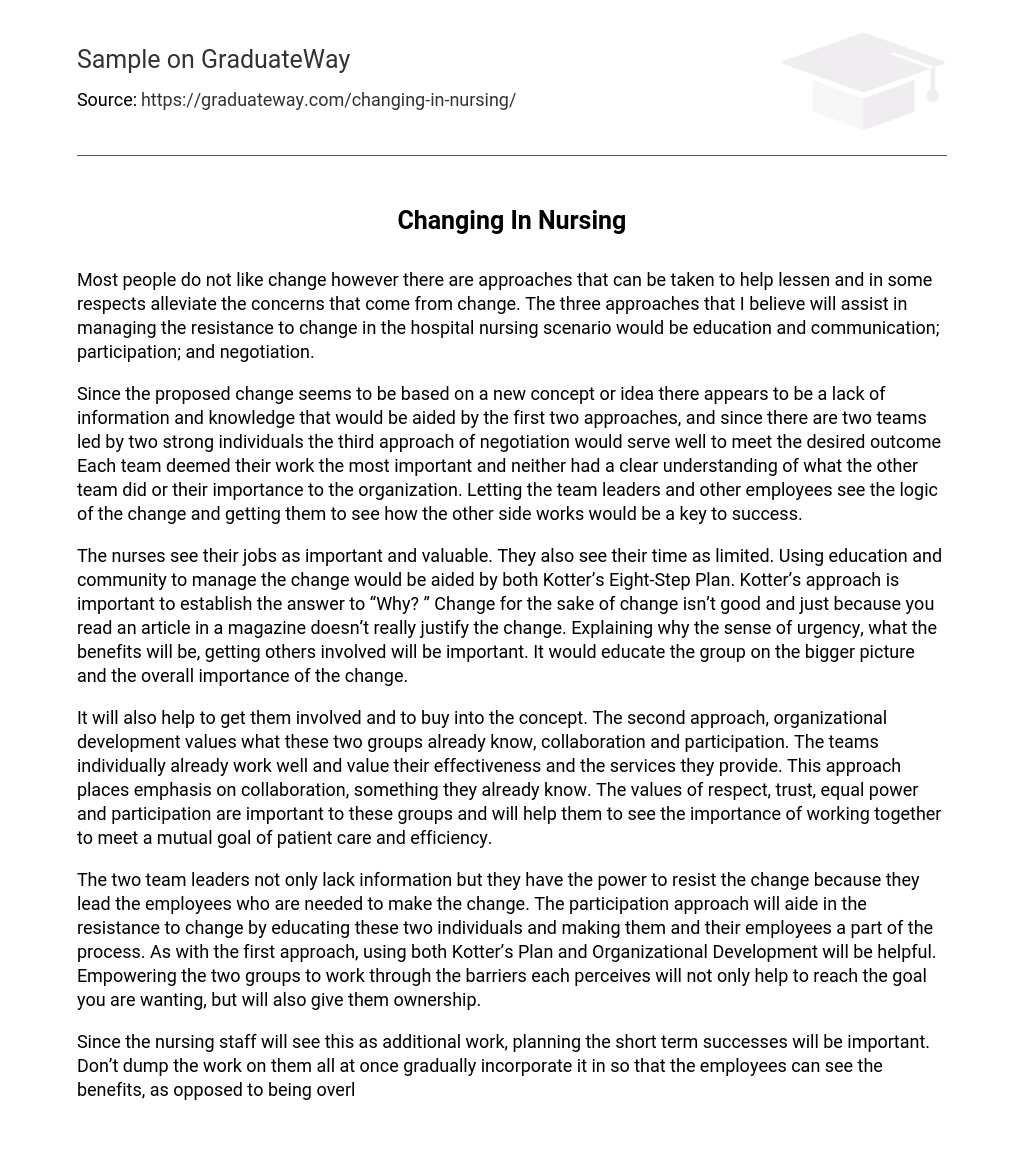Although change is often met with resistance, there are various ways to minimize and potentially eradicate the associated concerns. Specifically in the hospital nursing field, I propose three strategies that can effectively tackle resistance to change: education and communication, participation, and negotiation.
Given that the proposed change is founded on a novel concept or idea, it seems to suffer from a lack of information and knowledge that could be remedied by employing the first two approaches. Additionally, with two teams led by strong individuals, the third approach of negotiation would effectively contribute to achieving the desired outcome. Both teams considered their work as the most significant and neither possessed a comprehensive understanding of the other team’s role or their significance within the organization. To ensure success, it is imperative to enable team leaders and other employees to comprehend the reasoning behind the change and appreciate how the other side operates.
The nurses recognize the significance and worth of their job, but they also acknowledge the constraints of time. To effectively handle the transition, they can benefit from utilizing Kotter’s Eight-Step Plan, which emphasizes the need to establish the reasons behind change. Simply implementing change without a valid purpose or relying on articles from magazines as justification is insufficient. It is crucial to create a sense of urgency, explain the benefits, and involve others in order to educate them on the broader scope and overall importance of the change.
By involving and ensuring buy-in from both groups, the concept can be better implemented. Organizational development, as a second approach, appreciates the existing knowledge of collaboration and participation within these two groups. The teams already function well individually and recognize the value of their own effectiveness and services. This approach places significance on collaboration, which is familiar to them. The groups prioritize respect, trust, equal power, and participation, all of which are crucial in helping them understand the significance of working together towards the common objective of patient care and efficiency.
Both team leaders lack information and resist change due to their accountability for the employees responsible for implementing it. The participation approach seeks to tackle resistance by educating these leaders, involving them, and engaging their employees in the process. Utilizing both Kotter’s Plan and Organizational Development would be advantageous, similar to the initial strategy. Empowering these two groups to overcome perceived obstacles will not only help achieve the desired objective but also give them a sense of ownership.
To avoid overwhelming the nursing staff with their workload, it is important to carefully plan short-term goals. Instead of implementing changes suddenly, introduce new tasks gradually so that they can understand the advantages. Participation is key in Organizational Development as it involves team leaders and employees in developing and implementing changes. By actively participating, they become valuable contributors to overall success.
The nursing supervisor can leverage the experts’ knowledge and experience in patient care and services to improve and streamline processes. Negotiation, along with the implementation of Lewin’s Three-Step Model and Organizational Development, will be the chosen approach. By negotiating with each group, the nursing supervisor can introduce necessary changes through incentive packages, reducing resistance to change. Offering more downtime during work could be seen as a positive aspect, aligning with the concept of efficiency.
One way to effectively address any perceived or actual problems is by conducting a survey. By surveying employees about the change and collecting their feedback, the supervisor can identify areas of concern. This would help build trust and confidence as the supervisor addresses the outlined concerns and takes steps to resolve them. Additionally, the supervisor can benefit from involving the team in developing action plans to address specific concerns (Robbins, 2005).





